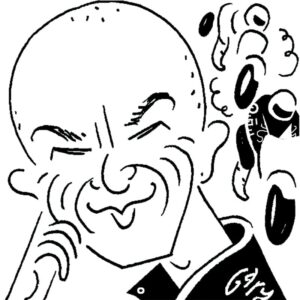Mat Oxley
“Factory engineers always bristle at any effort to curtail their engineering”

Yet paradoxically the owners of the premier car and motorcycle championships now spend much time working to equalise performance across the grid, to improve the racing to attract more fans to boost profits.
In MotoGP this process has been underway for over a decade, triggered by two specific events. On January 1, 2007 tobacco sponsorship was banned, robbing the paddock of its richest form of income. A year and a half later, on September 15, 2008, American bank Lehman Brothers went bankrupt, signalling the start of a global financial crisis (GFC) that was still present when COVID-19 struck earlier this year.
During the first few years of the GFC, the MotoGP grid shrank dramatically, with just 14 starters at some rounds and 10 finishers at others. Something had to be done, so MotoGP rights-holder Dorna embarked on a cost-cutting crusade that answered that age-old question once and for all…
“We are a sport, but sport can only live if there is a show, so this is showbusiness,” said Hervé Poncharal, president of the MotoGP teams association. “We need to understand that grand prix racing’s time as an engineering laboratory isn’t over, but that role is less important than it was before.”
First of many revised technical regulations was the move to a single tyre supplier in 2009. None of the tyre companies – Bridgestone, Michelin or Dunlop – wanted the end of free competition but Dorna was adamant.
There is still debate in the paddock over the merits of spec tyres. Some argue that forcing teams to use the same tyres actually increases costs, because whenever the tyre supplier changes the specification of its products the manufacturers have to expensively redesign their chassis. What isn’t in doubt is that fewer tyres are used under the current regulations. Before, a rider might burn his way through 40 tyres during a grand prix weekend. Now the allocation is 22.
Engine rationing was next on the agenda. From 2010 riders were restricted to six engines per season, reducing consumption of pistons, crankshafts and other internals by almost half.
Dorna also cut MotoGP’s annual testing allowance from 22 days to 12 days, shrank practice and qualifying from four hours per weekend to 3hr 15min, reduced the choice of wheel rim sizes and gear ratios and increased minimum machine weight from 148kg to 157. Dorna was really getting into its stride now, scything through the rulebook, and upsetting factory engineers who always bristle at any effort to curtail their engineering.
In 2012, the Madrid-based company introduced its most radical cost-cutting ploy, specifically to keep poorer teams on the grid. These teams were allowed to build MotoGP bikes around road-going superbike engines, at a fraction of the cost of leasing prototype MotoGP machines.
The factories hated sharing racetracks with glorified road bikes and they weren’t the only ones. In May 2012, reigning World Champion Casey Stoner announced his retirement, citing Dorna’s low-cost and “dangerously slow” budget bikes as a factor in his decision.
“This is a prototype championship,” said the Australian. “We need more high-quality bikes out there, not less. The championship is going backwards.”
But Dorna now had the holy grail in its sights: the introduction of a spec ECU and software. Honda immediately threatened to quit the championship and move to World Superbikes if MotoGP electronics development
That threat vanished when Dorna’s private-equity owners Bridgepoint bought the Swiss sports marketing company In front for its football TV interests. By chance, part of the package included the World Superbike Championship, which Bridgepoint handed to Dorna. Honda now had nowhere to run, so in 2016 MotoGP became a spec-ECU series.
Dorna hadn’t won every battle but it had won the war. However, some of its efforts to cut costs had the opposite effect. For example, revising the practice schedule in 2010 had the unintended effect of increasing the number of crashes, with a heavy impact on budgets.
One other rule change also caused more crashes, specifically as riders entered corners. Gradually MotoGP’s fuel capacity was reduced, not to reduce costs but to force manufacturers to improve their lean-burn technology.
The final reduction, to 20 litres, was a step too far, because electronics engineers started shutting off fuel on the overrun to save a few precious drops at each corner.
“To have the engine-braking you want, you need fuel,” said Corrado Cecchinelli, MotoGP’s director of technology. “By going very lean you have erratic combustion, which can mean a different engine-braking character at every corner, which catches riders out.”
Dorna is now hosting regular online conferences with the manufacturers to ensure MotoGP is still viable once the world emerges from this pandemic. Already most machine development has been frozen until 2022.
The good news is machinery costs won’t be reduced any further, so the quality of racing should remain undimmed.

